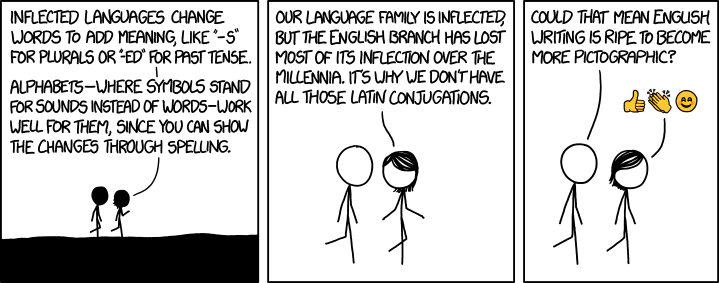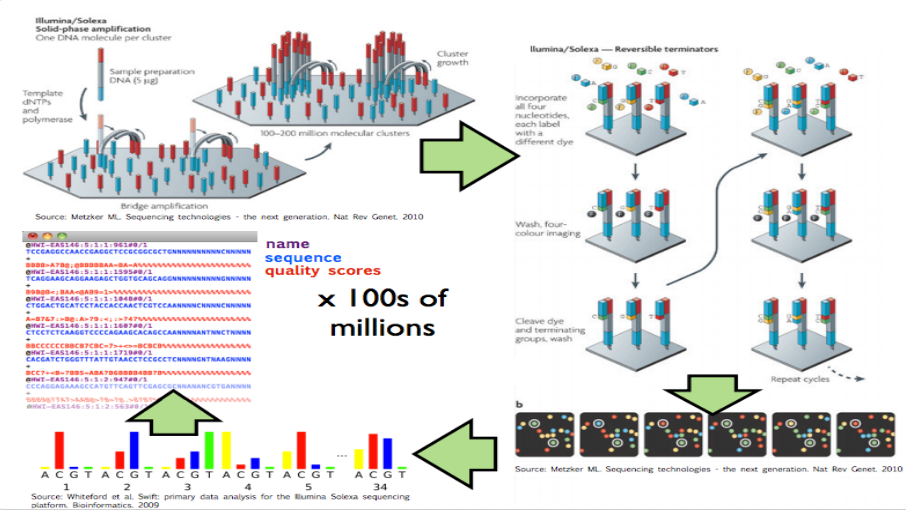Once, when people you knew took photos of you, those pictures would circulate like any other small, flimsy object: erratically. They might pop up unexpectedly in a shoebox, yellow on a seldom-visited relative’s fridge, or languish on a forgotten hard drive. They could even be lost completely. If strangers photographed you, you had even less chance of tracking those images’ lives. After the shutter clicked, the picture would usually move out and away from you. Photos of you existed, for better or worse, to be used by others.
Now, Instagram can lead those errant images back to you. Every time a friend or acquaintance or complete stranger tags you in a picture, that little moment taps back — oh, hey! You even get to decide which interpretations of yourself to bring into the fold. In offering you the chance to decide which tagged photos of yourself you want to show the visitors to your profile, Instagram (and Facebook, Instagram’s owner and originator of the practice) offers you a feeling of control. No picture means it didn’t happen. Not every picture of you ever taken will end up there, and pictures you don’t like won’t stop existing. Still, looking at your own careful edit of tagged photos, it seems pictures of you might have existed for you all along.
These tags are just a favor the app does for you, a free bump off a toilet seat to keep you at the party. While you’re judiciously weighing your tagged photos against your selfies, deciding if they’re worthy, chances are you have been photographed more in the last five years than in the rest of your life put together — by people you know, by total strangers, by dilettantish and serious street photographers alike, and of course by unmanned security cameras. And every time another human shares those pictures of you, on Instagram or elsewhere, and every time you repost them or slap on a geotag, you are contributing to a data set so valuable that the CIA has joined the marketers and analysts stumbling over each other to comb through it.
Looking at your own careful edit of tagged photos, it seems pictures of you might have existed for you all along
You know this. Does it matter? Does it sour your fleeting feeling of control? “A woman…is almost continually accompanied by her own image of herself,” John Berger wrote in his 1972 book Ways of Seeing. “Whilst she is walking across a room or whilst she is weeping at the death of her father, she can scarcely avoid envisaging herself walking or weeping.” Instagram, the great feminizer, affords us all this hyperawareness. And the erotics of it, too. The other night, a friend admitted — as if this is even considered shameful at this point, like something that really needs to be admitted — that he really likes looking at his tagged photos because, he said, “I love looking at other people looking at me.”
My parents’ bathroom in my childhood home had two mirrors facing each other. I would stare at myself in either of these mirrors, my image bouncing back and forth, trying to catch a glance of the me behind the me behind the me behind the me behind the me, dodging in and out of frame as if I might outrun my reflection. Looking at others looking at you — and feeling able to control that gaze, even for a moment — feels like catching that glance of the you behind the you, at last.
In 1988, Pascale Claude Aubry was seventeen and photographed without knowing it on the stoop of a bank in Montreal. In the picture, she squats on a low step. Her knees are wide, her sweater baggy, her hair bleached, and her affect restless. The photographer, Gilbert Duclos, published the image in a local cultural magazine called Vice Versa. Aubry didn’t find out about the photo’s publication right away, but when she did, she was so angry, so humiliated, that she took Vice Versa to court. Over the next 10 years, her case went all the way to the Supreme Court of Canada. When asked in court what damage the publication had done to her, she said simply, “Some people laughed at me.”
Aubry fought for a decade and was awarded $2,000 in the end, for violation of privacy. She also got, however, the satisfaction of knowing that her case had a chilling effect: Quebec now has the most restrictive street photography laws in North America. Photographers there almost always have to get permission from everyone they shoot if they plan to use the photos for anything, ever.
There’s a lot about this story that feels impossible to relate to now (she fought for 10 years?) and especially so in New York, where courts have upheld street photographers’ rights to shoot without permission in the face of much more than embarrassment. In 2006, the New York Supreme Court threw out a case in which a Hasidic man attempted to sue the artist Philip-Lorca diCorcia for exhibiting a photo diCorcia had taken of him, claiming it violated his religion. The rub is that most American courts feel art should be protected as free speech. (“New York has been fairly liberal in its protection of what constitutes art,” mused the judge, sounding like a recent art school graduate who has just settled for an internship at Sotheby’s. “The court [has] recognized that art can be sold, at least in limited editions, and still retain its artistic character…first amendment protection of art is not limited to only starving artists.”)
Then there’s the fact that we’re all so much more used to being photographed now. Recently, the Instagram-famous street photographer Daniel Arnold posted a photo of a girl sitting on a stoop in Manhattan, talking on her phone, looking over one shoulder and flashing a hand sign at Arnold’s iPhone camera. Arnold, who has been called variously “the best photographer on Instagram” (Gawker) and “Instagram’s ultimate street photographer” (Wired), has more than 124,000 followers, so this photo has more than 2,000 likes. The girl in the picture quickly commented on it — “hey THAT’S ME” — immediately followed by multiple people asking her, envious or curious or both, whether Arnold had asked permission to take the photo or just took it straight away. Maybe she and Arnold knew each other, maybe they didn’t. Either way, many other people who have discovered themselves on the photographer’s feed have responded enthusiastically too, excited to be seen by someone who has called himself “paparazzi for strangers.”
To be in Manhattan in the summertime is to be ready for your close-up, whether you like it or not
And what if, like Aubry, you notice yourself being pictured when you don’t want to be? In a 2014 article for Wired, writer Mary H.K. Choi shadows Arnold while he shoots in midtown Manhattan, and describes people’s reactions when they do notice he is photographing them: they’ll duck or glare, but rarely do they confront him. If someone looks right at Arnold, sometimes he’ll say, “Have a nice day,” or “Thank you” — and they usually answer, automatically, “You’re welcome.”
Arnold is good, but of course he isn’t the first or only person to take and display pictures of strangers in New York: think of Diane Arbus in Washington Square Park, Bruce Davidson on the subway (although Walker Evans got there first), Joel Meyerowitz in Central Park, Garry Winogrand at the World’s Fair, or Mary Ellen Mark literally anywhere. If you’re on the street in New York, you’re fair game. But even beyond the work of “real” photographers — a porous definition these days, when barriers to entry are so low — to be in Manhattan in the summertime is to be ready for your close-up, whether you like it or not. There are so many strangers of so many proclivities, tapping wildly at their phones and unwieldy tablets, aiming them toward everything and nothing and probably your face, by accident or on purpose.
I haven’t found any women on Instagram who take the kinds of pictures Arnold does: classic, decisive-moment, flow-of-human-life, can’t-make-this-shit-up street photography that shows the faces and bodies of strangers. Choi describes Arnold’s shooting outfit — denim on denim — and how invisible this generic get-up makes him. She says he “looks like someone everyone went to school with,” and because he’s a white man with a handsome-enough face, he moves inconspicuously through the crowd. I’ve never thought of this as a power before: to be able to circulate unnoticed, to throw your camera in people’s faces, to sometimes disturb or even anger them, but every time you say, “Thank you,” still have someone say, “You’re welcome.”
When Aubry was photographed, she was a teenage girl in androgynous garb in a depressed city. “A woman’s presence expresses her own attitude to herself, and defines what can and cannot be done to her,” Berger writes in Ways of Seeing. Is photographing someone, collecting their image, doing something to them? Is it really something you could forbid with a look or a “presence”? Is there a difference between getting caught in a frame and being its object?
In 1969, the Metropolitan Museum of Art held a show called Harlem on My Mind: Cultural Capital of Black America, 1900–1968. It featured only photographs, some by black photographers, arranged in an ethnographic, chronological “tour” of Harlem — a place where the white, male curators assumed most museum visitors had never been. In a leap of illogic, the show included no work by any of the many black artists living in Harlem at the time. It did include, however, a closed-circuit TV showing real-time footage of people walking on 125th Street and Seventh Avenue — essentially, a pre-internet zoo livestream, with Harlem locals playing the pandas. It wasn’t a video of the passersby, just a pseudo-surveillance dragnet employed in the name of high culture. Black artist groups were there to picket the show the day it opened.
The Met may have sought to give a nod to the civil-rights movement, but instead they shared headspace with COINTELPRO, the FBI program that monitored and infiltrated activist groups. While that program was formally ended in 1971, Black Lives Matter activists have been watched, too. Last year, the Intercept revealed that the Department of Homeland Security had been actively monitoring the movement online since the first protests in Ferguson in 2014; this April, the news outlet reported that the CIA’s venture capital firm, In-Q-Tel, was investing in companies that specialized in mining social-media data. Of these companies, the Intercept wrote that two targeted Instagram: PATHAR’s Dunami, which traces connections and networks via social-media posts, and Geofeedia, which aggregates geotagged photos to monitor events as they happen — a capability that, the Intercept points out, the company itself suggests could help monitor activists’ movements. The images activists post, their hard work and transparency, becomes evidence.
I’ve never thought of this as a power before: to be able to circulate unnoticed, to throw your camera in people’s faces, but every time you say, “Thank you,” still have someone say, “You’re welcome”
The corporate-speak that cloaks these enterprises has a strangely — or strategically — brain-deadening effect. “Only listening for keywords and hashtags? You’re missing out on two thirds of activity on social media,” goads the website for Geofeedia, a company with offices in Florida and the Midwest. “Know what’s happening anywhere with increased situational awareness and real-time response management.” PATHAR, a Colorado-based social-media-analytics startup, offers examples of how you might use its product that belie the actual contracts it seems to covet: “If you want to look at all soccer moms that like to cook in Florida, Dunami can build that channel. If you want to see what CrossFit enthusiasts are talking about in Colorado, Dunami can tell you.” At last, the CIA’s CrossFit-monitoring program has found its perfect partner.
It takes a lot to say stop. At night in bed, phone in hand, we dispatch the unflattering angles and most embarrassing moments: no, no, no, OK, no. But to complain at the moment the picture is taken amounts to scopophobia. As it says in the preamble to the CreepShots subreddit, a repository for grainy zoom photos taken of unsuspecting women’s bodies: “We may be immoral, creepy, sinister (some may even accuse us of being ‘disturbed’) individuals but there is nothing here that breaks any laws. When you are in public, you do not have a reasonable expectation of privacy.” The government might say the same about being on the internet. Of course, some people can still expect more privacy than others.
I am looking at the photographs of me that have been tagged on Instagram and considering myself as an object of vision. (Berger: “Thus she turns herself into an object — and most particularly an object of vision: a sight.”) In Claudia Rankine’s book Citizen, she recounts Judith Butler’s answer to the question of what makes language hurtful. In her telling, Butler responds, “Our very being exposes us to the address of another. We suffer from the condition of being addressable.” Photography, so close to language in its ability to dissect or distract, acts the same way; in romance languages, you talk about what a photograph “describes,” not what it “depicts.” Instagram offers the illusion that you get to describe yourself.
When my friend admits with delight how he loves to look at others looking at him, maybe he’s really loving how novel it feels to know you’re being surveyed: to be a sub who’s really in control. It’s hot to imagine yourself being seen, being watched, when you’re controlling the terms — when you’re three taps away from “Hide from My Profile.” That submission is a choice, but control is a given, is the fantasy your tagged photos encourage. Other people post pictures and they point them at you. And you can accept their interpretation of your body, allow it into the story you tell about yourself, or you can reject it. You can even say that was never you, not the you that you know.
In the face of where your image really goes, though — how it still travels out and away — this rejection isn’t a lot. It’s not really anything at all. But how often do you get to say no?
 When the U.S. government killed AT&T’s $39 billion bid to swallow up rival T-Mobile in 2012, the would-be target had arrived at a major crossroads.
When the U.S. government killed AT&T’s $39 billion bid to swallow up rival T-Mobile in 2012, the would-be target had arrived at a major crossroads.

















 I could have also grabbed an assortment of cookies or granola bars. People who are severely allergic to peanuts should note that one of the two choices for sandwiches on both days was PB&J.
I could have also grabbed an assortment of cookies or granola bars. People who are severely allergic to peanuts should note that one of the two choices for sandwiches on both days was PB&J.











































 With the first few Developer Preview of Android M (a.k.a Marshmallow), Google offered a Dark mode option for the OS. However, the feature was missing from the final release of the OS. Many presumed that the feature was not ready and would be making its way to the next release of the OS.
With the first few Developer Preview of Android M (a.k.a Marshmallow), Google offered a Dark mode option for the OS. However, the feature was missing from the final release of the OS. Many presumed that the feature was not ready and would be making its way to the next release of the OS.







 Images courtesy the Superchief Gallery.
Images courtesy the Superchief Gallery. 
 Time Out
Time Out
 Lauren YS x Nychos
Lauren YS x Nychos 


